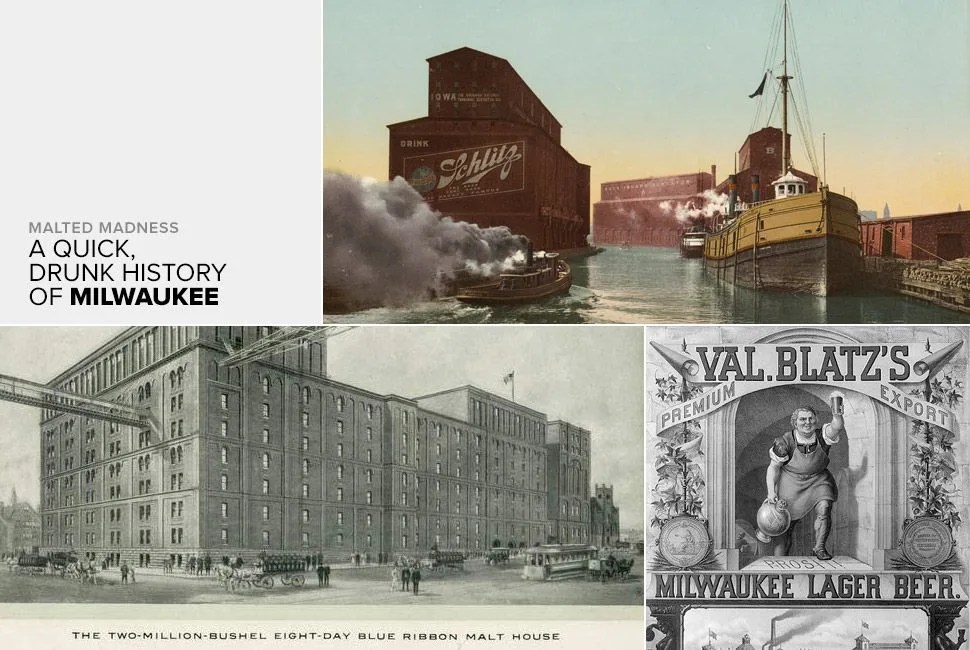At one point in its history, Milwaukee was the self proclaimed “Beer Capital of the World”. The Wisconsin city had access to wheat (it was the world biggest exporter of it by 1860) and the water of Lake Michigan, but this isn’t why it became such a behemoth beer producer. It all started with ze Germans, revolutionary advertising and one of the largest disasters of the 19th century.

The Rise
Milwaukee has always been a beer town. Even before it was officially a city, Milwaukee had one tavern per every forty residents. A boom-town that quickly filled up after the discovery of large iron-ore deposits in nearby Dodge County, the city attracted large numbers of immigrants in search of the American dream. A decade and half after its incorporation in 1846, the city’s population had increased by a factor of five. Many of these new residents were Germans — intellectuals who had fled the Revolution of 1848 spreading throughout Europe — who were drawn to Milwaukee for its uniquely bumping scene of German Catholicism.
By 1880, native Germans made up 27 percent of the city’s population — the highest concentration of a single immigrant group in any American city — and with the Germans came beer halls, beer yeast and the know-how for brewing. Among these immigrants were Frederick Miller, who leased a brewery in town in 1855, Joseph Schlitz, who did the same in 1856 and Frederick Pabst, who followed a decade later. Along with Valentin Blatz, these four men represented the biggest breweries in town.
A panorama of Milwaukee in its heyday, with most of the breweries in the back left.
Then, at about noon on October 8, 1871, a fire started near a barn in Chicago — which was in the midst of a severe drought — and spread to over 3 square miles of the city, destroying 11 of the city’s 23 breweries, much of its water works and the housing for a third of the population. In response, many breweries in Milwaukee, following Schlitz’s lead, floated vast shipments of free beer to Chicago through Lake Michigan. Word got out, loyal drinkers were made and Schlitz became known as “The beer that made Milwaukee famous.” A year before the fire Schlitz produced around 6,800 barrels of beer. By the end of 1871, Schlitz produced 12,381 barrels.
